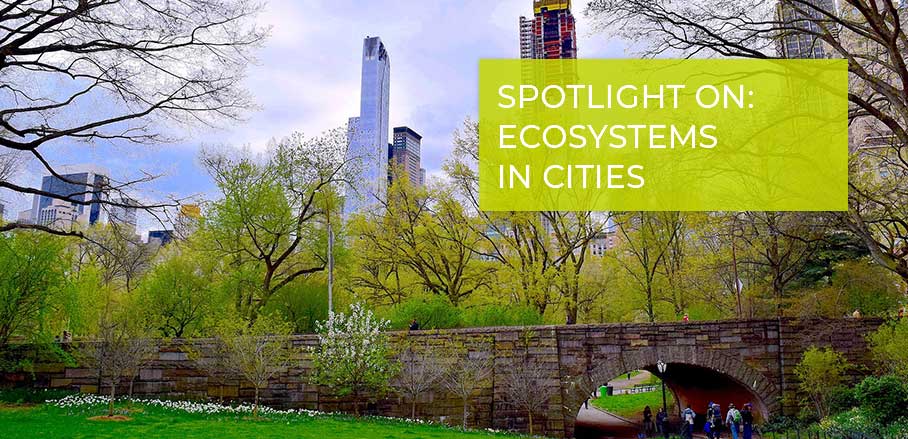Urban Green Spaces Are Our Most Effective Tool to Improve Urban Life
Rapid urbanisation also means that the game for the quality of life and the health of the citizens will be won or lost in the cities. Barcelona-based architect Eloi Juvillà Ballester analyses the potential of urban green spaces as decisive component in this game.
Health and the City
Studies suggest that our health is more conditioned by our environment and way of living than by our health system. The cities we live in, the way we move around urban areas, and the quality of the air we breathe constitute 50 per cent of the so-called “health determinants”, whereas only 11 per cent are related to our health systems.
In high- and middle-income countries, urban planning, infection control, and immunisation have minimised deaths attributed to infectious diseases such as smallpox, malaria, tuberculosis, and cholera, which were the main causes of urban deaths in the 19th century.
More recently, non-communicable diseases (NCD) have become the most common causes of death: cardiovascular diseases, diabetes, respiratory diseases, neuro-mental illness, digestive illness, and certain types of cancers are on the rise. Labelled as lifestyle diseases or “urban health penalty”, they mainly affect people who are hit hardest by social inequalities.
Urban Health Penalty
Urban environments often encourage sedentary lifestyles which contribute to major health problems such as obesity and cardiovascular diseases. They also promote dependence on vehicles, which are often fossil-fuelled, causing negative environmental impacts such as air and noise pollution.
The following numbers emphasise this issue. In 2014, more than half the European population suffered from obesity or were overweight. In 2018, air pollution caused 4.4 million deaths worldwide. Noise pollution increases the chance of cardiovascular illnesses by 17 per cent, leading to 10,000 premature deaths every year.
If recommendations of the United Nations World Health Organization (WHO) would be met regarding physical activity, exposure to air pollution and noise, heat, and access and proximity to green spaces, 20 per cent of deaths from natural causes could be postponed every year.
Improving Health, Mitigating Climate Change – The Power of Green Spaces
Green spaces are a powerful tool in counteracting urban health penalty. “Biophilia”, understood as the need to be in contact with nature in order to live a physically and emotionally healthy life, is a concept increasingly promoted by medical experts and urban planners alike. Greenery both improves the population’s health and promotes the mitigation of climate change. People are becoming more aware of this: a survey states that seven out of ten Europeans choose their place of residence based on its proximity to green areas.
Studies show that having a green space nearby reduces both depressions and asthma by 25 to 30 per cent and multiplies the time people spend with physical exercise by a factor of 3. Physical inactivity reduces life expectancy in good health and it is estimated to cause 600,000 deaths per year in the European region.
Greenery can reduce the air temperature between 2 and 8 degrees Celsius, mitigating the heat island effect and reducing the number of tropical nights. In future scenarios that predict a temperature difference of 15 degrees between urban and rural spaces, such reduction can entail success or failure of the urban model.
The Scottish Natural Health Service has quantified the health impact of the recommended minimum physical activity, claiming that a vigorous 30-minute walk in a natural environment, five days a week, can reduce the risks of heart attack and strokes by 20 to 30 per cent, of diabetes by 30 to 40 per cent, of hip fractures by 36 to 68 per cent , of bowel cancer by 30 per cent, and of breast cancer by 20 per cent.
Moreover, green spaces favour motor skills and cognitive abilities during childhood, can reduce symptoms of attention deficit hyperactivity disorder, and improve the level of activity in adulthood. Examples for successful initiatives and policies promoting peri-urban parks are Australia’s “Healthy Parks, Healthy People” and Barcelona Region’s “healthy paths in periurban natural areas”.
Peri-urban parks also play an important role in urban adaptation to climate change by reducing the urban heat effects and protecting the city from floods and wind. The green belt of the city of Vitoria in Spain is an example of how to prevent floods with natural interventions that at the same time give paths for walking and physical activity and improve biodiversity.
Ambitious, but Feasible: Everybody’s Right to Green!
The WHO recommends ensuring that everyone has a green space no more than 300 meters in distance from their homes, and that cities have a ratio of 10-15 square metres of green areas per person.
The city of Mollet del Vallès, Spain, shows that this is an ambitious, yet realistic goal: thanks to a clear strategy the city went from a ratio of 3.7 to 16 square metres of urban green per inhabitant within 25 years, with 100 per cent of its population living within 300 meters of a green area.
Such measures reduce geographical inequalities, granting access to green benefits to all – including those who, due to economic, social, or physical reasons, do not have the functional mobility to travel after the green. Green spaces thus work as a redistributive justice tool too.
Renaturing cities and promoting green infrastructure are some of the most effective tools we have in addressing two of the major urban challenges today: climate change and the habitability of cities. We defend the right to green!
A recommendation to urban planners worldwide: plan urban greenery as a universal-access infrastructure for everyone to enjoy; monitor their continuity, maintenance and management to achieve maximum benefits from this natural infrastructure.
- Urban Green Spaces Are Our Most Effective Tool to Improve Urban Life - 10. March 2020
